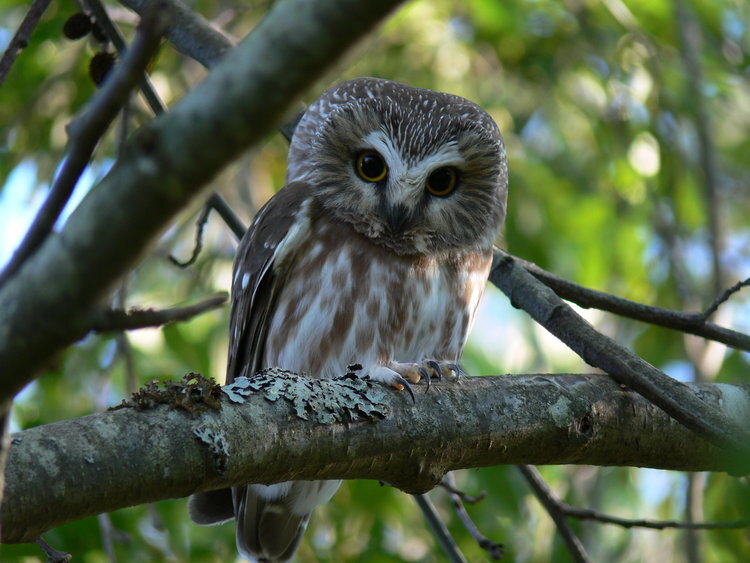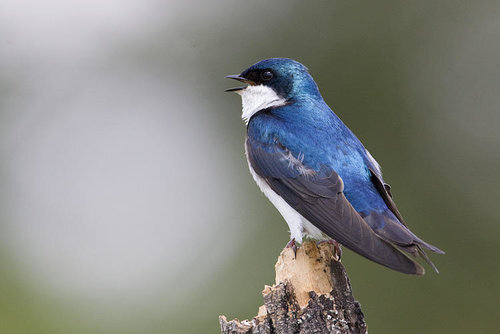The Edmonton and Area Land Trust works toward enhancing wildlife habitat on our conservation lands. Nest boxes are installed at some locations for cavity nesters such as Chickadees, Wrens, and Tree Swallows. You can help support these and other bird species by purchasing or building your own bird nest box.
Bird Conservation
Several species of birds are cavity nesters, meaning that they nest in holes in large trees. Some of these species are primary excavators, such as the Pileated Woodpecker, which excavates a new hole in a tree each year. Other species of birds and mammals are secondary cavity users, meaning that they will use a natural cavity caused by disease or fire, or one created by a woodpecker.
The loss of many natural areas, and practices of removing dead standing trees (also called snags), has resulted in fewer available nesting spots for many species. Fortunately, some bird species will also nest in wood boxes, or other types of artificial structures. Bird boxes are simple to make and are a practical way to contribute to wildlife conservation, even in your own backyard. Please keep in mind that the design, size and entrance hole size are important, and will determine which species might use your nest box
Learn more about some of our nest box species
How to Make a Nest Box
You will need:
Untreated 3/4 inch wood, preferably cedar
Wood screws
Saw, drill and drill bits
Features of a good nest box:
An entrance hole that is the correct size for the target species, with no outside perch.
Rough interior walls or "ladder" of grooves toward the entrance hole helps the young climb out.
An easy-open side or front panel, with a hinge or rotating screws, to make it easy to clean and maintain. Adding a "lock nail" keeps the box securely closed, but can be easily removed for cleaning.
Drainage and ventilation holes, plus a sloped roof and recessed floor to keep baby birds warm and dry.
Uses screws instead of nails to make future repairs easier.
Check out our nest box design for general guidelines to follow.
Nest Box Blueprints
For species-specific dimensions, click on each bird for the corresponding blueprints.
Install 6 to 30 feet high on a tree or post, facing water. Line the box with several inches of wood shavings.
Install 5 to 10 feet high on a pole, post, or tree facing water. Line the box with several inches of wood shavings.
Install 12 to 15 feet high on a live tree facing south. Line the box with 2-3” of wood chips.
Install 6 to 12 feet high on a tree, post, or pole facing south or east. Pack the box completely to the top with pine wood chips.
Install 5 to 10 feet high on a pole, post, tree, or building facing any direction.
Install 5 to 6 feet on a pole or post facing south or east. The swallows will fill the box with twigs and other nesting materials.
Install 4 to 6 feet high on a pole or post facing east.
Install 5 to 15 feet on a post, pole, tree, or even building, facing away from the prevailing wind. Line the box with 1” of wood shavings.
Install, Monitor and Clean Your Nest Box
Install boxes on trees or posts according to requirements for the target species (e.g. height from the ground, direction, distance to water, etc.)
Watch the boxes during breeding season for use.
After breeding season (late summer or fall), track the contents of each box. The contents of a nest box will often indicate which species used it.
Remove old nesting material each year. Add fresh wood chips if applicable for the target species.
You can download these tips from our Nest Box Maintenance Guide.













